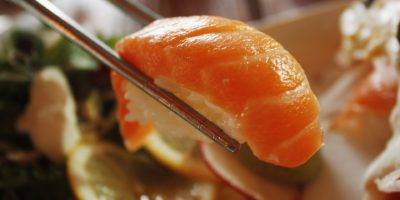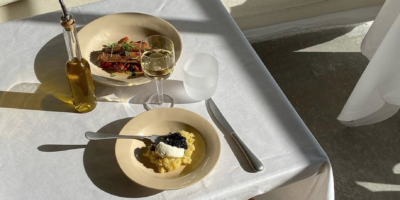The Japanese Breakfast
A country revered for its food, most people think of Japanese cuisine as sushi, ramen, tonkatsu and the like. All of these are pillar components of the country’s cuisine, and certainly what we’re most familiar with outside Japan. But this list doesn’t represent every day meals. Just as the French don’t eat delicacies like frog legs, snails, or croissants each day. So you may be wondering, what do the Japanese eat for breakfast?
Well, breakfast in Japan is certainly unique to each region, but the staples tend to remain the same almost throughout the country. From miso soup to fermented soybeans, the Japanese breakfast is an unknown for most Westerners. And who knows, maybe you’ll even find a new favorite dish!
Tea
The classic Japanese breakfast always starts and ends with tea. Specifically, strong green tea. It can really be any variety, and each region has its own specialty, but you’ll most likely find a piping hot cup of green tea on every Japanese breakfast table.
Matcha is perhaps one of the most traditional Japanese teas, and one of the strongest in terms of caffeine. This Matcha tea is made from mixing intensely green Matcha powder with boiling water to create a healthy morning elixir. While it may seem simple enough, making a good cup of Matcha is all about the ritual behind it.
The Japanese take pride in their rituals, especially those regarding food and drink. Matcha is one of them. There are special utensils for mixing the tea, a special way to stir, and certain ways to pour the hot water into the tea powder. All of it combines to create a relaxing ritual and an experience to remember.
If you want to try a traditional Japanese tea time in Paris, head to Jugetsudo By Maruyama Nori. Nestled in Saint-Germain-des-Prés, this upscale tea house does Matcha well, and with all the ritual included. Stop in for an authentic Japanese tea experience.
jugetsudo by maruyama nori – 95 rue de seine 75006 paris
metro station: odeon or mabillon
opening hours: open monday – saturday 11AM//7PM
price range: €€
Rice
Steamed rice or gohan is one component you’ll find in just about every Japanese breakfast. The most common breakfast consists of rice, a soup, protein, and side dishes and veggies.
Rice is rather ubiquitous throughout Japan and East Asia, so it’s not a huge surprise that it’s eaten at every meal. Including at breakfast time! Rice is generally topped with a seasoning called furikake which consists of sesame seeds, dried fish flakes, dried seaweed and salt. Sounds a little funny? Don’t knock it until you try it, this classic combo has been around for centuries.
During the Japanese breakfast, rice can also be eaten as a type of porridge. Basically this is just rice cooked in more water, and most rice cookers have a setting for this. The porridge is then topped with your choice of ingredients, from egg to pickled plum to nori (dried seaweed).
Soup
The true Japanese breakfast includes a steaming bowl of miso soup. This is usually homemade, and each family has their own variation of the recipe, so the soups’ flavor will differ from region to region, and from house to house. But it’s true that no matter where you go, miso soup is an integral part of the Japanese breakfast.
The soup the Japanese are so enthusiastically slurping up in the morning is traditionally made from kombu (dried kelp) and bonito flakes. This is the basic recipe, and various toppings like seaweed, tofu cubes, mushrooms and scallions can be all be added. Miso soup is really versatile, and gets stronger in that rich umami flavor each time it is reheated. For this reason, many Japanese families simply reheat last night’s soup for breakfast the next day.
Protein: Eggs
A breakfast staple pretty much everywhere, eggs are enjoyed every morning by people all over the world. The Japanese included. A typical Japanese breakfast will feature rice, some kind of soup, and usually some form of protein and some sides. Eggs are usually soft boiled and added to morning soup or fried and set atop rice, or eaten plain.
No matter where you go in Japan, the Japanese breakfast often includes eggs or tamago in one form or another. Other popular styles are Japanese omelet (plain omelet with a specific cooking method), fermented eggs or ramen eggs, and even raw.
Protein: Fish
While fish not might be the first thing that comes to mind when you think about breakfast, it’s a staple in the Japanese breakfast. Fish is a big part of Japanese cuisine, and not just for breakfast! Of course, this popularity makes sense for an island nation with extensive coastlines.
Fish is usually enjoyed at breakfast alongside rice and soup, and usually served with various sides. At breakfast time, fish is cooked very simply – either grilled in the oven or pan fried whole and seasoned with salt and pepper, maybe a little soy sauce. Traditionally, the Japanese don’t add too much seasoning to fish in order to really let the flavor come through. Mackerel and salmon are popular breakfast fish, but you can use whatever is your favorite!
Protein: Tofu
Tofu is pretty popular across Japanese cuisine, and even makes an appearance at the breakfast table. Thanks to its versatility, tofu pretty much takes on the flavor of whatever it is cooked with, and is enjoyed in a variety of ways. The most common way to eat tofu at breakfast is in cubes, in the miso soup. Tofu can also be fried, grilled or served chilled with you choice of sauces and seasonings.
Side Dishes
The Japanese breakfast wouldn’t be complete without the various side dishes. This is because this meal is all about balance; there’s a little bit of everything.
One of the most popular breakfast sides is natto. Basically, these are fermented soybeans that have a sticky, slimy texture and a strong umami flavor. Natto is definitely more of an acquired taste for most foreigners, but something you should try if you want to try a traditional Japanese breakfast. It is a popular topping across Japan, and usually goes on rice or in onigiri which are basically stuffed rice balls.
Another important side dish component in Japanese breakfast is tsukemono or pickled vegetables. Of course, the most recognizable variety is pickled ginger. But tsukemono can be made from just about anything; daikon radishes, onion, cucumber, and plum are all regularly used.
Dried seaweed or nori also makes common appearances on the Japanese breakfast table. While this may seem a strange ingredient, chances are you’ve eaten nori before and not even realized it! Actually nori is the dark green wrap on the outside of your sushi (or inside in the case of a California roll), but it’s also commonly used as a seasoning, or served in strips as a side dish. You can sprinkle some on rice, eggs, or miso soup for extra flavor.
Japanese Food in Paris
Well, if you don’t have a trip to Japan planned right now, you can still experience this vibrant culture and cuisine here in Paris. There are a ton of Japanese restaurants in the French capital, especially around Rue Saint-Anne in the 2nd district.
This area is considered to be Japanese foodie central, but if you want authenticity, I’d encourage you to break off from this area. Have a look at our guide to the best Japanese restaurants in Paris for more ideas. And if you’re interested in more cultural activities, check out a taste of Japan in Paris.
Planning a trip to Paris ? Get ready !
These are Amazon’s best-selling travel products that you may need for coming to Paris.
Bookstore
- The best travel book : Rick Steves – Paris 2023 – Learn more here
- Fodor’s Paris 2024 – Learn more here
Travel Gear
- Venture Pal Lightweight Backpack – Learn more here
- Samsonite Winfield 2 28″ Luggage – Learn more here
- Swig Savvy’s Stainless Steel Insulated Water Bottle – Learn more here
Check Amazon’s best-seller list for the most popular travel accessories. We sometimes read this list just to find out what new travel products people are buying.

















